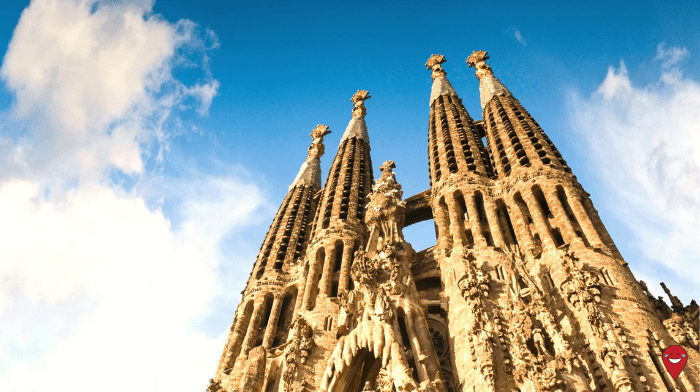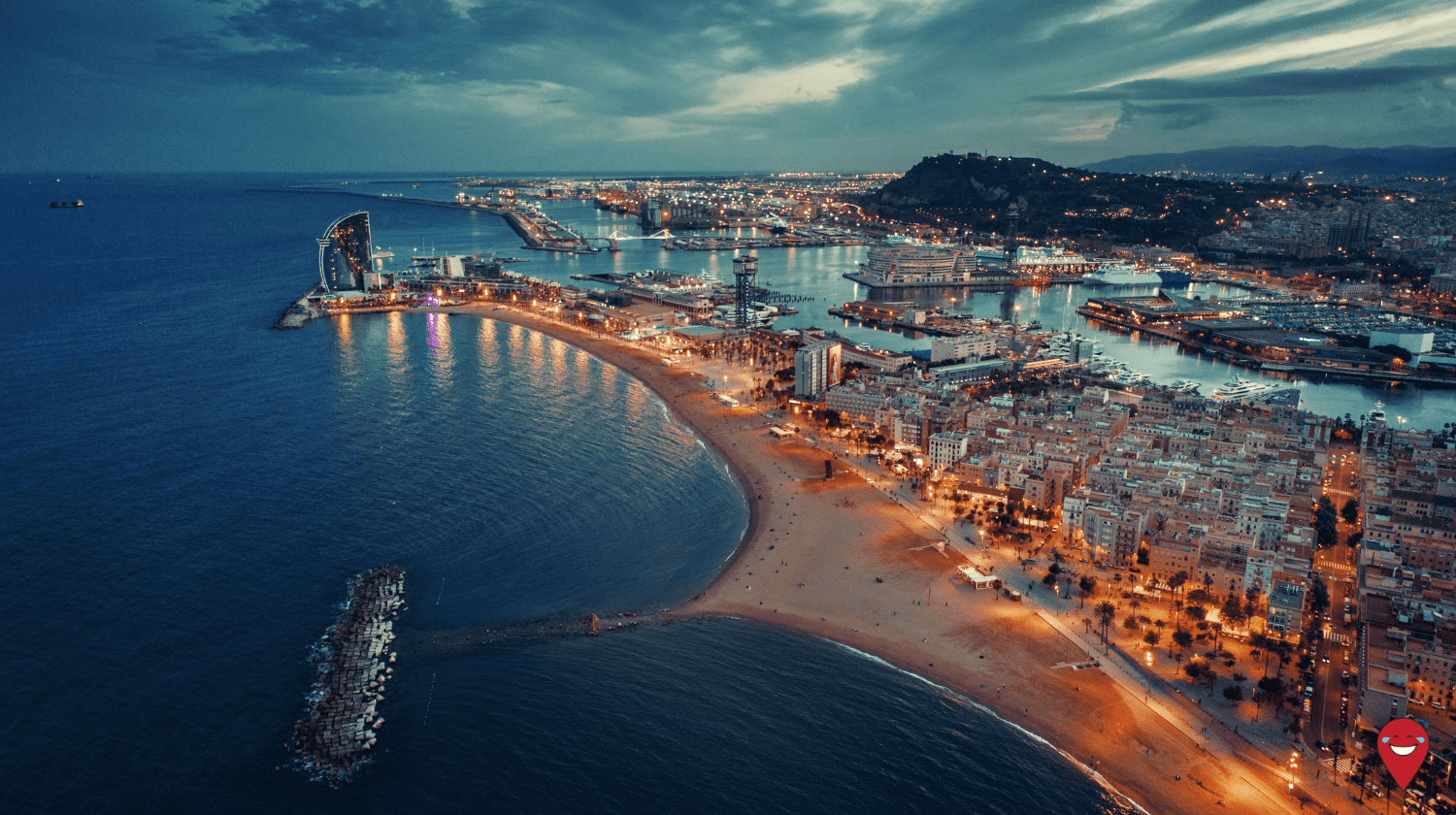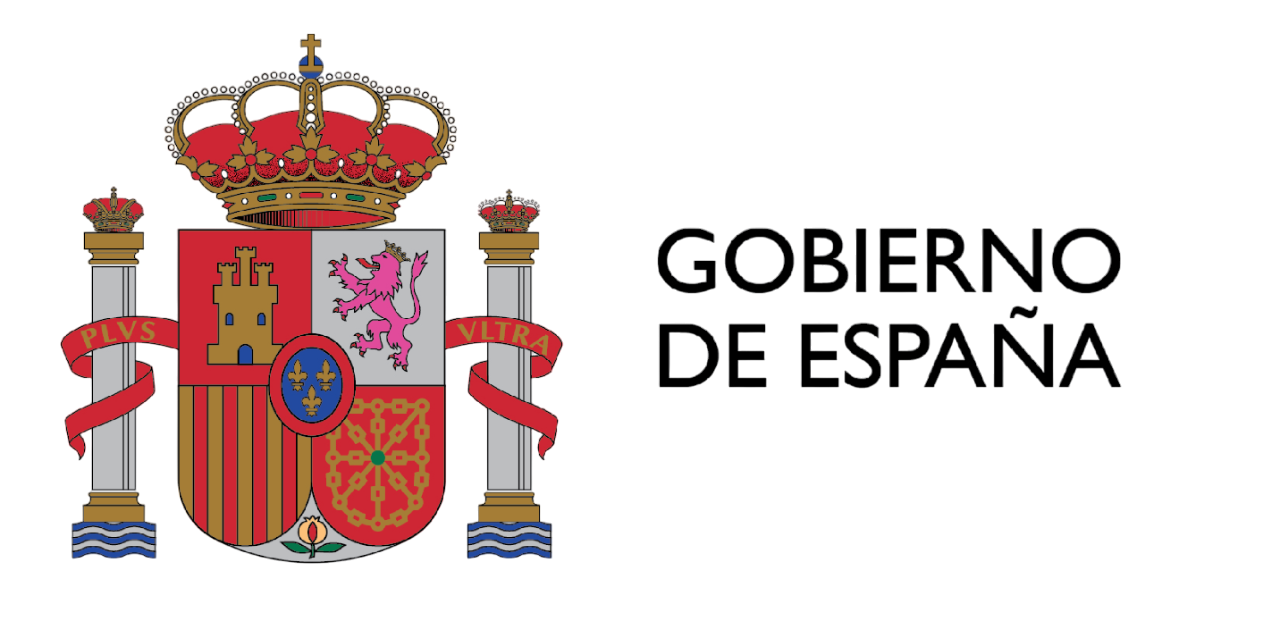Join us on our Free Tour in Barcelona
Visit the Sagrada Familia with one of our Free Tour of Barcelona It is an unforgettable experience.
The basilica, Antoni Gaudí's masterpiece, is full of details that reflect his unique vision and deep spirituality. Below, we present three curiosities about the Sagrada Familia that you probably didn't know.
Get ready to be surprised and laugh a little!
The football beginnings of the field
Did you know that the land where the Sagrada Familia is located was, at the beginning of the 20th century, a soccer field? This land was popularly known as Can Grassot, in honor of the family that owned several lands in the area. Between 1900 and 1901, RCD Español (then Sociedad Española de Foot-ball) played its matches on this field. A decade later, CE Europa, another historic team from Barcelona, also used this place for its first matches.
Who knew that one of the most emblematic buildings in the world stands on an old football field! So, when you visit the Sagrada Familia, imagine Gaudí shouting “GOOOL!” while designing the basilica.

Lizards on the facade of the Sagrada Familia
When making a Sagrada Familia tour It turns out that this is not just a temple; it is a compendium of religious symbolism that Gaudí meticulously integrated into his architecture. One of the most intriguing aspects is the presence of angels and monsters on its facades. Gaudí, influenced by his deep knowledge of the Apocalypse and other biblical texts, plastically represented the visions described in these writings. Thus, on the exterior facades one can observe a mixture of celestial and terrestrial creatures: angels from all the heavenly choirs, saints, animals and fantastic beings such as dragons and lizards.
This contrast symbolizes the struggle between good and evil, purity and sin, present in both the spiritual and earthly worlds. And of course, nothing says “welcome to Barcelona” like a giant lizard in a church!

Fruits and their meaning
One of the most colorful and least known curiosities of the Sagrada Familia are the sculpted fruits that adorn its towers and facades. Gaudí chose to represent typical fruits of each season as a symbol of good works and spiritual fruits. On the façade of the Nativity, facing east and representing the beginning of the day, we find spring fruits such as loquats, cherries, plums, peaches and pears. On the Passion façade, facing west and symbolizing the end of the day, autumn fruits such as apples, almonds, figs, persimmons and chestnuts are represented. The tallest fruit baskets contain spikes and grains of grapes, symbols of the Eucharist.
These fruits not only decorate the temple but also tell a story. In the upper parts of the apse façade, Gaudí placed various plants that form a garden around the tower of the Virgin Mary. We can also find leaves from trees such as cypresses, rose bushes, palm trees and olive trees, all mentioned in biblical texts such as the Book of Wisdom and Sirach.
The edible fruits, sculpted in granite by the temple's team of artists, are a representation of the fruits of good deeds and reflect Gaudí's desire to connect nature with the divine. So now you know, if you visit the Sagrada Familia and feel hungry, at least you'll know where Gaudi's fruity inspiration came from!

Discover our Free Tours in Barcelona
Joining our Free Tour of Barcelona will allow you to discover these and many other interesting facts about the Sagrada Familia. Every detail of this basilica, from its origins as a soccer field to the symbolism of its sculptures, reflects Gaudí's genius and devotion. Visiting it is not only a lesson in architecture, but a spiritual journey that will connect you with the vision of one of the greatest architects of all time.
So, are you ready to explore the Sagrada Familia with us?
We are waiting for you to share these and many other stories that make this temple a unique place in the world.
Do not miss it!










